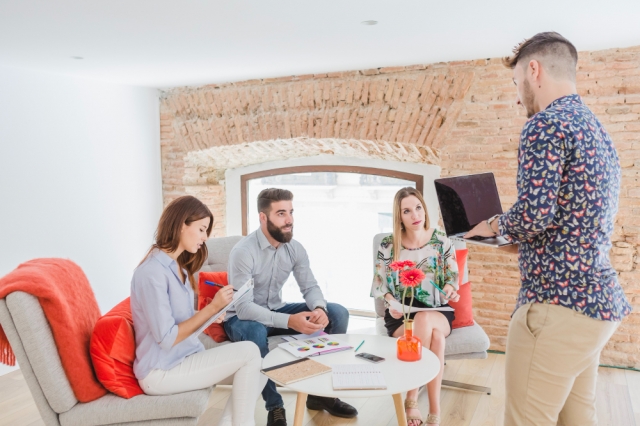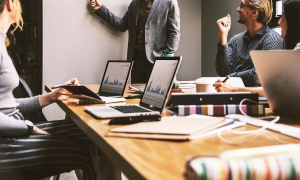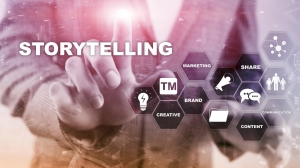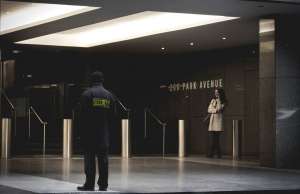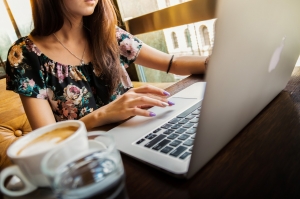In the sophisticated world of corporate event styling, understanding the psychological impact of color and composition has become crucial for creating environments that engage, inspire, and nurture attendees' mental wellbeing. By applying principles from art and literature, event designers craft spaces that tell compelling stories while maintaining cognitive harmony.
More than just décor choices, these techniques influence how people think, feel, and interact within a space. A thoughtfully designed environment can reduce stress, spark creativity, and even improve learning retention. This is why forward-thinking organisations increasingly invest in event styling that goes beyond aesthetics—because the mental wellbeing of attendees directly affects engagement, satisfaction, and outcomes.
The Science of Color Psychology in Events
Modern corporate event styling leverages color theory not just for aesthetic appeal, but as a powerful tool for influencing mood and behavior. Understanding the psychological impact of different colors allows designers to create purposeful, mentally restorative environments.
For example, research has shown that cool hues such as blue can lower heart rate and encourage calm thinking, while warmer shades like red or orange can raise energy levels. The ability to match these responses to event objectives gives planners a toolkit for shaping atmosphere with precision.
Strategic Color Zoning
-
Blue tones in learning areas to enhance focus and productivity
-
Green elements in networking spaces to promote relaxation and social interaction
-
Yellow accents in creative zones to stimulate innovation
-
Purple touches in VIP areas to convey luxury and exclusivity
A well-designed event might combine these zones so attendees naturally transition between focus, connection, and relaxation without feeling overstimulated. This zoning also makes large spaces feel intuitive and less overwhelming.
Color Psychology in Practice
-
Corporate training events emphasize blues and greens for learning and growth
-
Product launches utilize bold, energetic colors to create excitement
-
Executive meetings incorporate earth tones for groundedness and trust
-
Team-building events blend collaborative and energizing color schemes
One memorable example comes from a financial services conference where earthy neutrals were combined with green foliage walls. The palette conveyed stability while also encouraging fresh thinking—a subtle but effective way of reinforcing brand values through environment.
Artistic Composition in Space Design
Another critical principle is the use of leading lines. Just as a painter uses a road to guide the viewer's eye, event designers use pathways, lighting installations, and even carpet patterns to create lines that subconsciously direct attendee movement. These lines can guide guests from the entrance to the main stage or through a sponsor gallery, creating an intuitive journey through the space without relying solely on signage.
When done well, attendees often report that the space felt “easy to navigate” without realizing that visual composition was the reason. This reduces decision fatigue and allows more mental energy to be spent on the event content.
The Rule of Thirds
-
Position key design elements for maximum impact
-
Create natural flow through spaces
-
Establish visual hierarchy in branded areas
-
Balance busy and rest areas effectively
Applying this rule can prevent spaces from feeling lopsided or cluttered, a common pitfall in large-scale events with multiple sponsors competing for attention.
Visual Weight Distribution
-
Strategic placement of heavy design elements
-
Balance of light and dark elements
-
Distribution of negative space
-
Harmonious arrangement of furniture and decor
Negative space, often overlooked, is particularly powerful. Empty areas allow the brain to pause and reset before moving into the next area of engagement.
Advanced Composition Techniques
-
Creating focal points that guide attention
-
Using repetition and rhythm in design elements
-
Implementing symmetry for formal spaces
-
Utilizing asymmetrical balance for dynamic areas
For instance, a tech expo may use repeating geometric arches that echo themes of innovation and connectivity, subtly reinforcing the event's purpose without a single word being spoken.
Narrative Design Elements
Storytelling Through Space
-
Progressive reveal of brand messages
-
Thematic evolution across different areas
-
Connected design elements that build on each other
-
Culminating spaces that reinforce key messages
This technique turns attendees into active participants in the narrative rather than passive observers, making the experience memorable and emotionally resonant.
Literary Devices in Design
-
Foreshadowing through subtle design elements
-
Creating visual metaphors with decor choices
-
Using repetition for emphasis
-
Building to a visual climax in key areas
Designers might, for example, use a small motif—like a glowing lantern—that appears subtly in early spaces and culminates in a grand illuminated centerpiece. This creates a sense of payoff, similar to a plot twist in a novel.
Narrative Flow Management
-
Clear beginning, middle, and end in space design
-
Transitional areas that bridge different narratives
-
Consistent thematic elements throughout
-
Memorable concluding spaces
Cognitive Load Management
Minimizing Mental Fatigue
-
Creating clear visual hierarchies
-
Limiting competing visual elements
-
Providing mental rest zones
-
Using consistent design language
Information Architecture
-
Strategic placement of signage
-
Intuitive wayfinding systems
-
Progressive disclosure of information
-
Clear visual cues for different activities
Cognitive Relief Zones
-
Simplified color palettes
-
Reduced visual stimulation
-
Comfortable seating arrangements
-
Natural elements for grounding
Sensory Integration
Multi-Sensory Design Approach
-
Visual harmony through color and composition
-
Acoustic design for optimal sound levels
-
Tactile elements that provide sensory grounding
-
Subtle olfactory elements for enhanced experience
Sensory Balance
-
Stimulating and calming elements
-
Active and passive spaces
-
High and low energy zones
-
Complex and simple design areas
Case Studies in Psychological Design
Technology Conference Success
-
Color gradients reflecting the digital-to-physical journey
-
Composition techniques that guided traffic flow
-
Mental restoration zones between sessions
-
Improved engagement metrics
Corporate Retreat Transformation
-
Nature-inspired color schemes for stress reduction
-
Thoughtful space composition promoting collaboration
-
Strategic use of artistic principles in breakout areas
-
Positive wellbeing feedback
Measuring Mental Impact
Feedback Mechanisms
-
Attendee satisfaction surveys
-
Stress level assessments
-
Engagement duration tracking
-
Learning retention rates
Behavioral Analysis
-
Movement patterns through spaces
-
Dwell time in different areas
-
Social interaction levels
-
Signs of cognitive fatigue
Implementation Guidelines
Planning Phase
-
Audience analysis
-
Clear event objectives
-
Comprehensive color strategy
-
Composition planning
Execution Considerations
-
Lighting design that supports color psychology
-
Flexible, adaptive spaces
-
Monitoring attendee responses
-
Real-time adjustments
Key Takeaways and Next Steps
The integration of artistic and literary principles in corporate event styling creates spaces that are not just visually appealing but mentally restorative. Success lies in understanding how color, composition, and narrative elements can work together to support attendee wellbeing while achieving event objectives.
